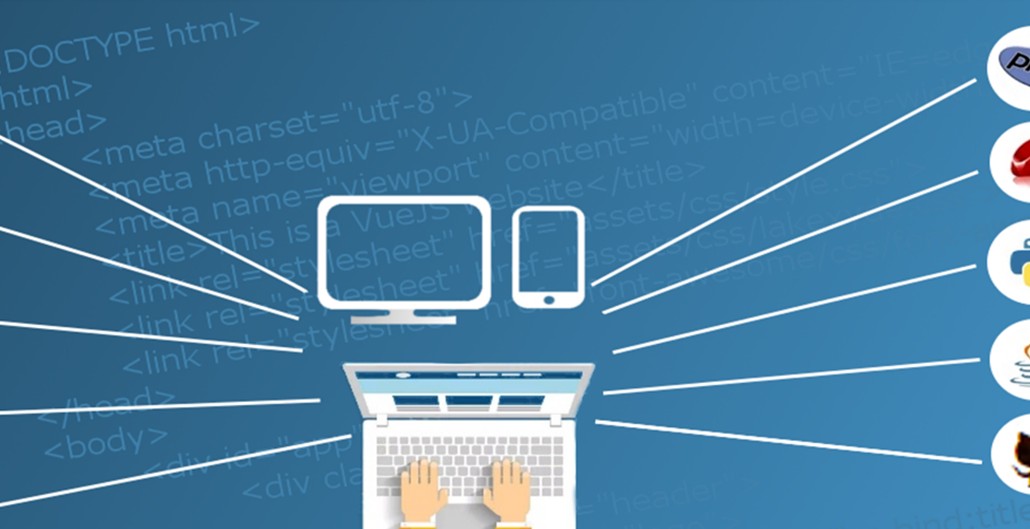How to Start a Successful Blog: Steps and Strategies for Beginners
Are you considering starting a blog but not sure where to begin? Blogging can be a fulfilling and rewarding experience, both personally and professionally. In this article, we will guide you through the steps and strategies for starting a successful blog.
Why Start a Blog?
There are numerous reasons why someone might want to start a blog. Perhaps you want to share your knowledge and expertise on a particular topic, or maybe you want to document your personal experiences and adventures. Blogging can also be a great way to promote your business or brand and connect with like-minded individuals.
Benefits of Blogging
In addition to the personal and professional fulfillment that comes with blogging, there are numerous benefits to consider. Blogging can help improve your writing and communication skills, increase your online presence and visibility, and serve as a platform for networking and collaboration.
- Blogging can also be a source of passive income through advertising, sponsorships, and affiliate marketing.
- It can also be a way to establish yourself as an authority in your field and gain recognition for your work.
- Additionally, blogging can be a way to express yourself creatively and share your unique perspective with the world.
Now that we’ve covered the why and the benefits, let’s dive into the steps and strategies for starting a successful blog.

Step 1: Choose a Niche
Before you start a successful blog, you need to choose a niche. A niche is a specific topic or subject that your blog will focus on. It’s important to choose a niche that you are passionate about and knowledgeable in. This will help you create high-quality content that resonates with your readers.
What is a Niche?
A niche is a specialized segment of the market that targets a specific audience or group of people. In the context of blogging, a niche is a specific topic or subject that your blog will focus on. For example, if you love cooking, your niche could be cooking and recipes. If you’re passionate about fitness, your niche could be fitness and health.
How to Choose a Profitable Niche
Choosing a profitable niche is crucial to the success of your blog. Here are some tips to help you choose a profitable niche:
- Choose a niche that you are passionate about and knowledgeable in
- Research your niche to ensure that there is a demand for it
- Check out your competition and see what they are doing
- Choose a niche that has the potential to make money
Once you have chosen your niche, it’s important to stick with it. Consistency is key when it comes to blogging, and your readers will appreciate it when you consistently provide them with high-quality content in your chosen niche.

Step 2: Choose a Domain Name and Web Hosting
Choosing a domain name and web hosting are crucial steps in starting a successful blog. A domain name is the address of your website that users type in their browsers to access your site. Web hosting, on the other hand, is the service that allows your website to be accessible on the internet.
What is a Domain Name?
A domain name is a unique name that identifies your website on the internet. It is the address that people type in their browsers to access your site. Your domain name should be easy to remember, relevant to your blog, and preferably, short and catchy. It should also be unique and not already taken by someone else.
How to Choose a Domain Name
When choosing a domain name, consider the following:
- Make it easy to remember and relevant to your blog
- Keep it short and simple
- Avoid using numbers and hyphens
- Make it unique and not already taken
What is Web Hosting?
Web hosting is a service that allows your website to be accessible on the internet. It is where your website files are stored and served to visitors when they type in your domain name.
How to Choose Web Hosting
When choosing web hosting, consider the following:
- Look for a reliable and reputable hosting provider
- Consider the hosting features and pricing
- Check the server uptime and speed
- Look for good customer support
Choosing the right domain name and web hosting provider is important for the success of your blog. Take your time to research and choose wisely.

Step 3: Set Up Your Blog
Now that you have chosen a domain name and a hosting provider, it’s time to set up your blog.
Install WordPress
WordPress is the most popular content management system (CMS) used by bloggers. It’s easy to use, customizable, and has a large community of developers who create plugins and themes to enhance its functionality. Installing WordPress is a simple process that can be done in a few clicks.
- Log in to your hosting account and access your cPanel.
- Find the “Softaculous Apps Installer” icon and click on it.
- Choose WordPress from the list of applications and click “Install Now.”
- Fill in the required information, including your blog name, username, and password, and click “Install.”
- Wait for the installation process to complete.
- Access your WordPress dashboard by going to yourdomain.com/wp-admin.
Customize Your Blog
Once you have installed WordPress, you can customize your blog to make it unique and visually appealing. You can choose from thousands of free and paid themes and plugins to add functionality and design elements to your blog.
| Customization Options | Description |
|---|---|
| Themes | Choose from a variety of free and paid themes to change the look and feel of your blog. |
| Plugins | Add functionality to your blog, such as social media sharing buttons, contact forms, and search engine optimization (SEO) tools. |
| Widgets | Add widgets to your blog’s sidebar or footer to display categories, recent posts, and other information. |
Take some time to explore the customization options available in WordPress and choose the ones that best suit your needs and preferences.

Step 4: Create Content
Content is the heart and soul of any successful blog. It is what attracts readers and keeps them coming back for more. But what exactly is content?
Content refers to any information that is presented on your blog. This can include blog posts, images, videos, infographics, podcasts, and more. The key to creating quality content is to provide value to your readers. This means creating content that is informative, entertaining, and engaging.
How to Create Quality Content
Creating quality content can be a challenge, but it is essential for the success of your blog. Here are some tips to help you create content that will keep your readers coming back:
- Know your audience: Understand who your target audience is and create content that will appeal to them.
- Be original: Create content that is unique and stands out from the crowd. Avoid copying content from other blogs or websites.
- Provide value: Make sure your content provides value to your readers. This can be in the form of information, entertainment, or education.
- Use visuals: Incorporate images, videos, and infographics into your content to make it more engaging and visually appealing.
- Be consistent: Consistency is key when it comes to creating content. Make sure you are publishing new content on a regular basis.
By following these tips, you can create quality content that will help your blog succeed.

Step 5: Promote Your Blog
Once you have created a blog and published your first few posts, the next step is to promote your blog. Blog promotion is the process of getting your blog in front of as many people as possible. This can be done through various channels such as social media, email marketing, search engine optimization (SEO), and paid advertising.
How to Promote Your Blog
Here are some effective ways to promote your blog:
- Social media: Share your blog posts on social media platforms like Facebook, Twitter, LinkedIn, and Instagram. You can also join relevant groups and communities to reach a wider audience.
- Email marketing: Build an email list and send out newsletters or updates about your blog to your subscribers.
- SEO: Optimize your blog for search engines by using relevant keywords and meta descriptions. This will help your blog rank higher in search engine results and drive organic traffic to your site.
- Paid advertising: Consider using paid advertising platforms like Google AdWords or Facebook Ads to promote your blog to a wider audience.
Remember that promoting your blog is an ongoing process. Keep experimenting with different strategies and track your results to see what works best for your blog.

Step 6: Monetize Your Blog
Once you have built a steady stream of traffic to your blog, it’s time to start thinking about monetizing it. Blog monetization is the process of earning money from your blog through various methods, such as advertising, sponsorships, and affiliate marketing.
What is Blog Monetization?
Blog monetization refers to the process of earning money from your blog. There are numerous ways to monetize your blog, and the most popular methods include:
- Advertising: You can earn money by displaying ads on your blog. The most common advertising programs for bloggers are Google AdSense and Media.net.
- Sponsorships: You can earn money by partnering with brands and promoting their products or services on your blog.
- Affiliate Marketing: You can earn a commission by promoting other people’s products or services on your blog.
- Product Sales: You can earn money by selling your own products or services on your blog.
How to Monetize Your Blog
Here are some steps to follow when monetizing your blog:
- Choose a monetization method that suits your blog’s niche and audience.
- Research the best advertising programs, sponsorships, and affiliate marketing programs for your blog.
- Sign up for the programs that you have selected.
- Place ads, sponsorships, and affiliate links strategically on your blog.
- Track your earnings and adjust your monetization strategy as necessary.
| Tip: | Don’t overwhelm your readers with too many ads. Keep your blog clean and easy to navigate. |
Remember that monetizing your blog takes time and effort. Don’t expect to see results overnight. However, if you are consistent and patient, you can turn your blog into a profitable business.

Conclusion
Starting a successful blog requires patience, dedication, and a willingness to learn. While it can be a daunting task, following the steps and strategies outlined in this article will help you get started on the right foot.
First and foremost, it is important to choose a niche that you are passionate about. This will ensure that you are motivated to create high-quality content that resonates with your audience. Secondly, invest in a reliable hosting platform and choose a domain name that is easy to remember and relevant to your niche.
When it comes to content creation, focus on creating informative, engaging, and well-researched articles that provide value to your readers. Use relevant keywords to optimize your content for search engines and promote your blog on social media platforms to increase visibility and attract more traffic.
Finally, don’t be afraid to experiment and try new things. Blogging is a constantly evolving field, and staying up-to-date with the latest trends and best practices can help you stay ahead of the competition.
- Choose a niche you are passionate about
- Invest in a reliable hosting platform and domain name
- Create high-quality and informative content
- Optimize your content for search engines
- Promote your blog on social media platforms
- Stay up-to-date with the latest trends and best practices
By following these steps and strategies, you can create a successful blog that attracts a loyal following and generates income for years to come.
